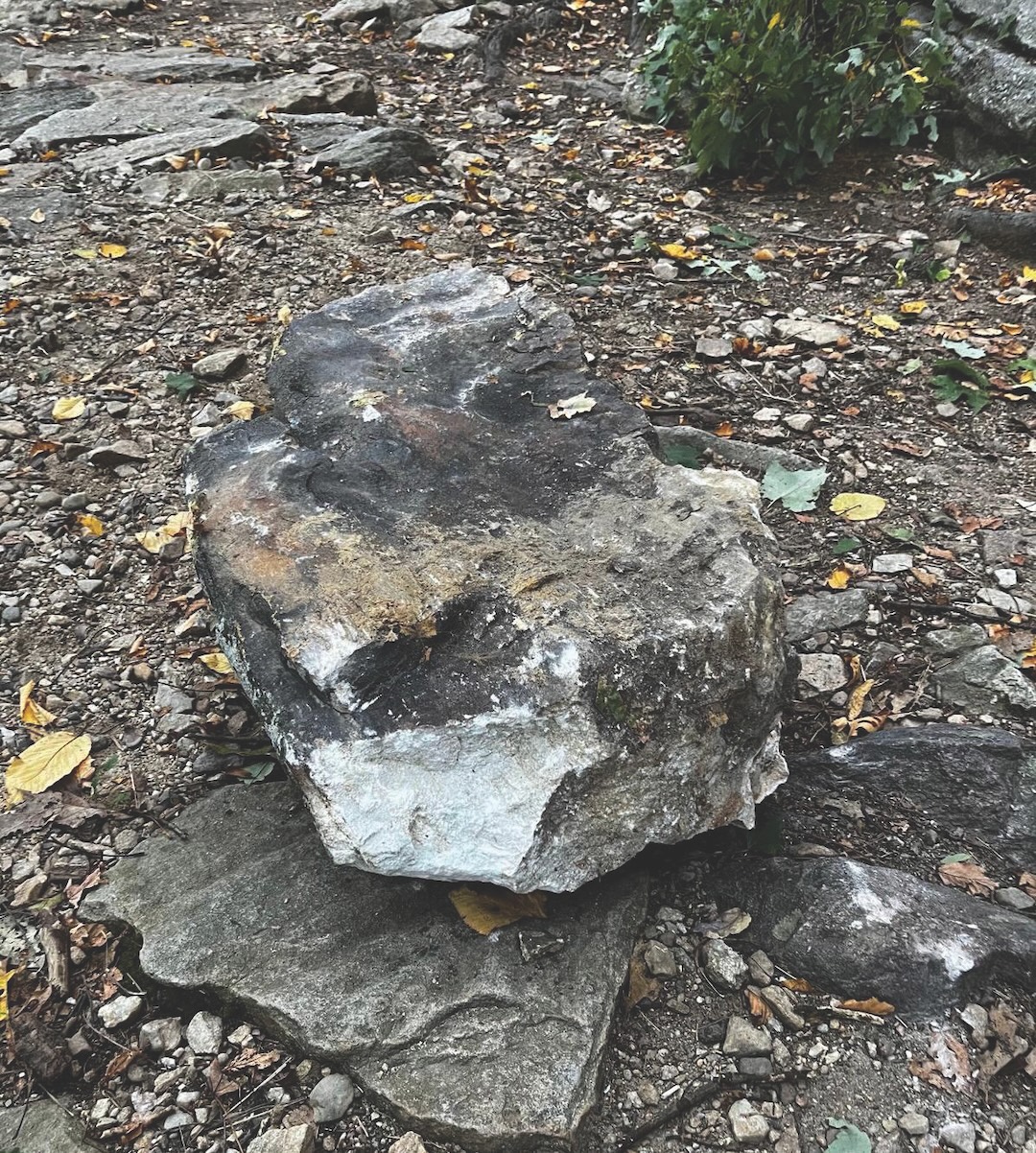Rockfall — Rock Dislodged During Intentional Fall
New York, Shawangunks, Trapps Area

On October 2, a male climber was practicing lead climbing falls on the second pitch of Frog’s Head (5.6). To protect these falls, the climber used a fixed piece alongside several pieces placed in and around a protruding feature. From above the gear, the climber deliberately took multiple leader falls. He had been practicing this skill following a “Fall Therapy” clinic that was taught indoors by a certified guide.
After at least one fall, the climber ascended and fell again, intending to be caught by the same cluster of gear. However, the force of falling dislodged a large piece of the rock feature where the gear had been placed. As he fell, the rock struck the climber in the face and head. The climber’s fall was eventually arrested by his next closest piece of gear.
Despite wearing a helmet, the climber was rendered unconscious and suspended upside down by the rope. The climber’s belayer held the fall but was otherwise unable to take further action to assist the climber.
Mohonk SAR rangers were promptly notified and responded. Due to the location of the patient, the SAR team accessed the site from the top of the cliff. Upon reaching the climber, the SAR ranger identified that the patient was not breathing adequately and quickly repositioned him to open the airway. The patient was also bleeding significantly from the wounds on his head caused by the falling rock. The ranger performed a “pickoff” maneuver to free the climber from the rope and bring him to the ground. Further personnel with a rescue litter performed a hasty carry-out operation. The patient was then transported to an ambulance and was subsequently transferred to a medevac.
ANALYSIS
While it is common for climbers to take leader falls on traditional gear in the Gunks, intentional lead falls are less typical. This incident highlights the potential risks of applying indoor training techniques to outdoor environments. Outdoor climbing demands full consideration of many aspects not found indoors. In this case, specific gear placements, interpretation of terrain features, and choosing what to fall on all came into play. This accident underscores the importance of carefully inspecting the rock and surrounding features before committing to falls.
Additionally, the potential absence of a pre-established “worst-case scenario” plan and clear communication between the climber and belayer may have contributed to the severity of the incident. Climbers should have a mutual understanding of risk management and safety measures, especially in an outdoor environment. This might include how to anchor an unconscious climber in order to release the belayer. (Source: Mohonk Preserve Rangers.)

